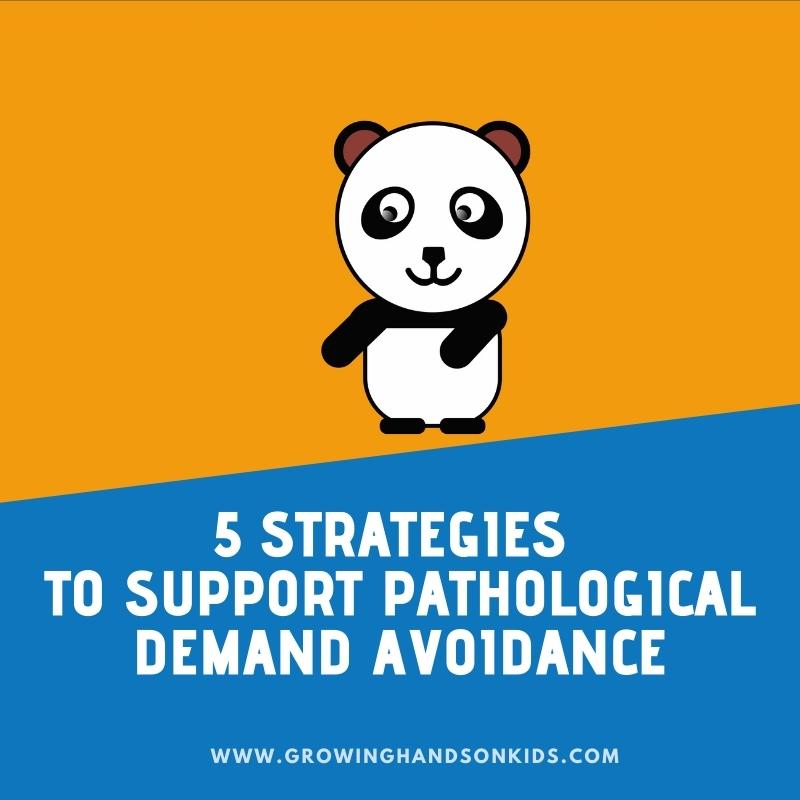5 Strategies to Support Pathological Demand Avoidance
Affiliate and Referral links are used below to promote products I love and recommend. I receive a commission on any purchases made through these links. Please see my disclosure policy for more details. As an Amazon Associate, I earn from qualifying purchases.
Put on your shoes.
No.
Brush your teeth.
No.
Eat your breakfast.
No.
Tasks that appear simple and easy to accomplish are refused. Tasks that your child has done before. Tasks that other siblings do without question.
Reward charts don’t work. Providing praise doesn’t work. Structure and routine don’t work. Firm boundaries don’t work.
Frustrated. Confused. Annoyed. How do you feel?
How does your child feel?
What’s going on with my child?
What is Pathological Demand Avoidance?
Pathological Demand Avoidance is described as a profile of Autism. A low threshold of tolerance to a variety of “demands” results in the child reacting with a fight, flight, or freeze response. Anxiety and a need to feel in control underpin a child’s avoidant behavior.
Each child who demonstrates avoidant behavior may do this in different ways. It could include shouting, laughing, crying, screaming, hiding, not talking, running away, throwing things, repetitive actions, and more.
The PANDA Approach with Pathological Demand Avoidance
The PDA society lists the following key principles for parents, teachers, and therapists in helping a child with PDA; built on an engaged relationship between the child and adult.
P: Pick Battles
A: Anxiety Management
N: Negotiation and Collaboration
D: Disguise and Manage Demands
A: Adaptation
You can read more details on PANDA in this article from Autism Parent Magazine.
5 PANDA Strategies to Support Pathological Demand Avoidance
Whilst every child is different, here are 5 examples of incorporating these PANDA principles.
1 || Create a game with the task.
Adapting the task into a game can help a child to feel they are playing. A simple adaptation is the use of your voice to make sound effects. A beeping noise that increases in volume as the child reaches the target is one way to turn a task into a game. Watch this in action on Instagram.
Creating a game may include the roll of a dice, keeping a score of points for a particular aspect of the task, changing color markers, or doing the task in a different environment (like under a table).
2 || Do the task together.
A task such as packing away toys may seem overwhelming. Doing the task together can reduce the demand of the activity into achievable smaller parts. For example, You could each pack away one toy. Other children may manage to pack away five toys whilst you pack away five toys. Or you could take turns in placing a toy into a storage bin.
Doing the task together with drawing tasks may have you sitting next to your child with separate small whiteboards. Whilst you draw on your board, your child may draw on theirs. Each mark on the board could be copied one at a time to build towards drawing a picture.
3 || Reduce indirect demands that accompany the task.
This may include removing the need to speak, reducing time expectations, reducing writing that accompanies the task, and/or reducing decisions that need to be made.
4 || Ask without asking.
Subtle changes to how we phrase or ask a child to do something can have a profound impact. Presenting the activity first rather than the demand is one way to rephrase a request. For example, “The toys are on the floor and the storage bin is empty. I can help.” Compared with “You need to pack those toys away now”.
Another way to rephrase a request is to use a question rather than a statement. For example; “I wonder if we could pack these toys would fit in the storage bin?”.
5 || Use humor or novelty.
In a similar way to turning a task into a game; using humor or novelty can help a child to feel relaxed and change their perception of what is expected of them to complete a task. For example; “Can we pack away these toys only using our feet and not our hands?”
Reframing takes time, creativity, patience, and empathy. It is not easy and emotions may run high quickly. For further information on Pathological Demand Avoidance, refer to the PDA Society.
Cindy has written five more ways to help a child who avoids tasks on her website, Your Kids OT.
Here are some more resources on Pathological Demand Avoidance:
- Pathological Demand Avoidance from the National Autistic Society
- Pathological Demand Avoidance from the Autism Parent Magazine
Cindy is a registered occupational therapist practicing in Sydney, Australia. She has two growing children who are a constant source of inspiration and learning. Cindy loves working creatively to help children to reach their potential, finding opportunities in everyday living, and making learning fun. She is also addicted to making printables (even when they take a long time to complete). Cindy is the author of the Occupational Therapy blog Your Kids OT. Read more articles from Your Kids OT at https://www.yourkidsot.com/blog
You May Also Like:

Heather Greutman, COTA
Heather Greutman is a Certified Occupational Therapy Assistant with experience in school-based OT services for preschool through high school. She uses her background to share child development tips, tools, and strategies for parents, educators, and therapists. She is the author of many ebooks including The Basics of Fine Motor Skills, and Basics of Pre-Writing Skills, and co-author of Sensory Processing Explained: A Handbook for Parents and Educators.


